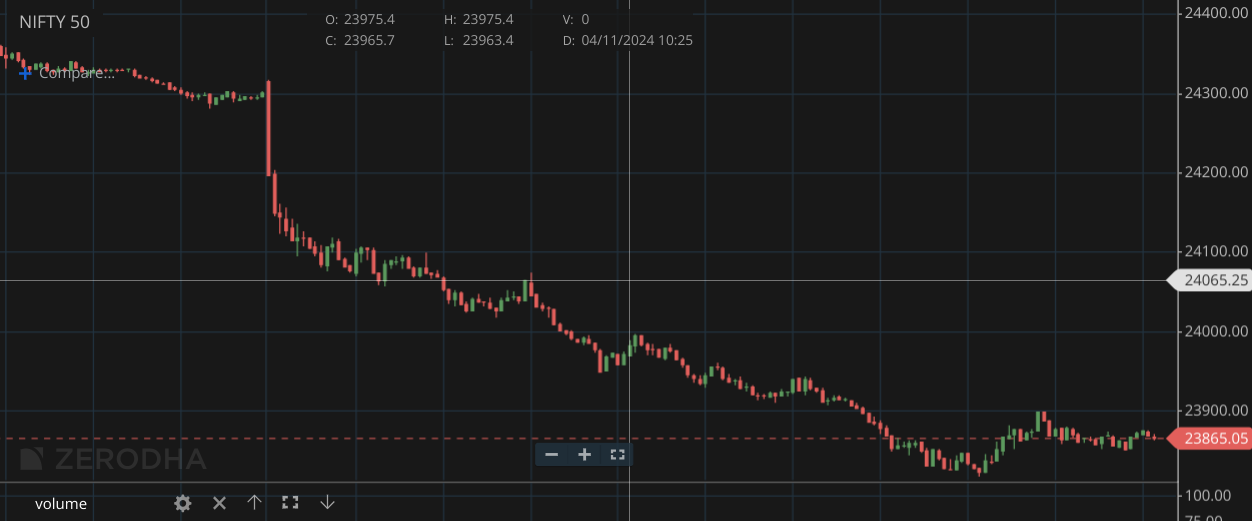On 11 November 2024, Asian Paints shares declined significantly, falling 8% to close at ₹2, 547.80. The day started with a fall of 7.38 per cent, and at one point it fell to an intraday low of ₹2,506, marking a fall of 9.51 per cent. This sharp fall is against the 52-week high of ₹3,422.95 on 29th December 2023, which represents a fall of around 25.3% from the current price.
Asian Paints is currently trading below its 5-day, 20-day, 50-day, 100-day and 200-day moving averages, indicating its prolonged underperformance. In the last three days, the stock has lost 12.26 per cent, indicating continued weakness.
There are several reasons for this significant decline:
Asian Paints’ consolidated PBDIT (profit before depreciation, interest, and tax) excluding gains from subsidiaries, declined 27.8 per cent to Rs 1, 716.2 crore from Rs 1, 239.5 crore. PBDIT margin, which is a percentage of net sales, has declined to 15.5 per cent from 20.3 per cent in the previous year.
Lower than expected revenue and profit: The company’s quarterly revenue was ₹8,027 crore, lower than the estimated ₹8,581 crore, and PAT (profit after tax) was ₹694 crore, lower than the estimated ₹1,079 crore. The PAT remained below expectations even after adjusting for the special loss of ₹180 crore, which is a negative sign for investors.
Managing Director and CEO Amit Singhal cited weak consumer demand and adverse weather conditions as the main reasons for the negative impact on performance. The paint sector in general is experiencing muted demand, with a slight decline in the volume of household decorative coatings. Total revenue in household coatings is down 5.5%, which is explained by sluggish consumer sentiment and prolonged rains in some areas.
Asian Paints is losing its market share due to intense competition and new entrants in the paint segment, which are hampering its growth.
Both quarterly revenue and net profit have declined on a year-on-year (YoY) basis. The company has seen a decline in operating profit margin and net profit. The promoters have increased the shares they have pledged, which raises concerns about the financial stability of the company.
The company is facing a decline in net cash flow, which indicates that it is unable to generate sufficient cash from operations. Asian Paints has a high P / E ratio (over 40), indicating that it may be overvalued against its earnings. The stock is currently trading at 13.6 -times its book value, reflecting a higher valuation than its underlying assets.
